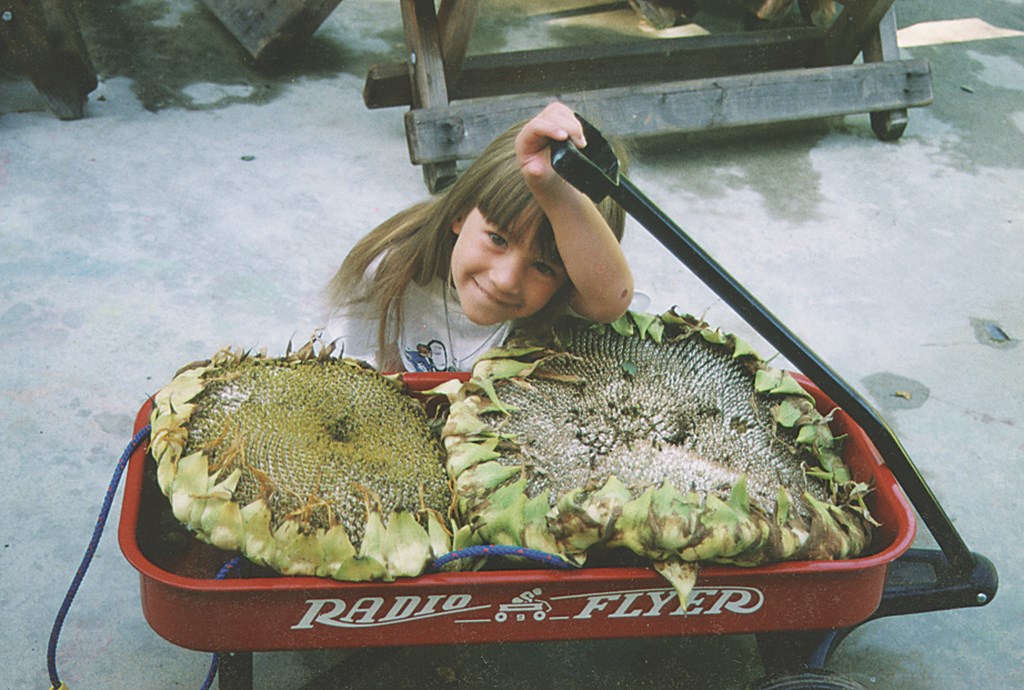Edibles by the Water

Imagine your clients in this scene: It’s a warm, summer evening, dinner for two on the patio is almost ready, the waterfall is on, and candlelight is reflecting on the surface of the pond.
But the salad isn’t quite complete, so this evening’s chef steps into the yard, clips some chives from a clump near the water’s edge and adds a finishing touch to the composition. Later, they pick a few plums and apricots for dessert, relaxed and about as happy as they could be in their backyard.
Though the setting is delightful, it’s the edible plants that complete the experience. And as was mentioned last time, with more and more people wanting good food and fresh ingredients, it’s the perfect opportunity for a designer to get clients even more involved in what’s going on in their backyard.
Last time, we covered the basic considerations of working with edible plants. This time, I’ll focus on plants that will work well with any watershape.
READY TO PLANT
A quick recap first. Before you start designing, remember the basic rules of planting edibles: Arrange the plants for ease of access, position them in the right places relative to the watershape, and make certain your clients know which plants and parts of plants are edible – and which are not.
For various reasons, some plants need to be situated further away from watershapes than do others. For example, a deciduous plant that drops a lot of fruit should be placed far away to minimize debris in the water, while an herb such as basil can be placed close to the water because it doesn’t produce significant enough debris to affect the water.
Beyond that, there’s actually little specialized knowledge you need to start designing with edibles. Place the lowest growers toward the front of a border and in the fullest sun possible. Larger plants and trees should go in the background, away from other plants so they don’t block the sun.
And remember access: Always set up pathways or stepping pads, because the more difficult it is to pick the fruit, the less likely your clients will be to enjoy it.
Some people prefer planting edibles in a separate area, but that’s definitely a preference rather than a requirement. Sure, you can plant a kitchen garden that’s set apart, but what we’re more interested in here is in integrating these plants into an overall watershape garden and using them to increase your clients’ pleasure in the entire setting.
Scattering edibles in between other (non-edible) plants opens up many design options. Most edibles camouflage nicely when located among ornamental plants. At this level, all you need to do is remember the basic rules of designing and consider the plant’s texture, color, size and function aside from its edible use (that is, if it’s meant to hide something or be hidden), then arrange edibles among other plants as you would in any other design.
Some plants, such as artichokes, can become specimens when surrounded by lower plants. Their striking purple blooms (if the clients don’t eat the artichokes first!) will definitely become conversation pieces. Others, such as thyme and other low-growing herbs, blend easily into almost any design.
One great hint: If you’re going to plant smaller herbs, take a chance and buy several of them to plant in different locations. It won’t take long to figure out what works best and where – and if more are needed, where to plant them for best results.
WHAT TO CHOOSE UP CLOSE
I don’t have the room here to cover ever type of edible plant you might use, but here is a list of some of the plants I’ve had success with. As always, what works will depend upon your region, so check with a local nursery for help in finding the best varieties and to get suggestions about which edibles do best in your area.
Here are my suggestions about which edibles work best in close proximity to watershapes:
[ ] Asparagus. This is a very vertical plant. If you’re an asparagus lover, you’ll generally be trimming the stalks long before they have a chance to keel over into your watershape. To be on the safe side, however, plant them a minimum of five feet back.
[ ] Banana. Similar to many palms, these are good companions for watershapes. Their tropical look pairs well with many other plants that are commonly recommended for planting around pools. Since they produce few leaves, the drop is minimal and easy to remove.
|
A Chocolate Fantasy No good column on edibles would be complete without chocolate. My mother always told me that beans are vegetables and that chocolate is a bean – therefore, chocolate is a vegetable. Although I’ve never known anyone to grow their own chocolate, it might be fun to try! Any of you out there who have, let me know who you are. — S.R. |
[ ] Herbs. Most people start with herbs such as basil, chives, rosemary, sage, thyme, oregano or mint as a way to gain experience with edibles. They’re the easiest category to grow and succeed with, and you’ll only need small quantities of each to start. These plants generally don’t produce much debris and don’t require much special care. But beware: Oregano and mint should only be planted in containers! They self-sow quite easily and will overtake any garden rapidly, so cut off any blossoms as they appear to promote growth and prevent self-seeding.
[ ] Lettuce. It’s great to be able to produce a salad straight out of the garden – and it’s also quite easy to do. Most nurseries sell mixed flats so you can experiment and find those varieties that appeal to your clients and grow most easily. These plants also tend to stay low and can be placed in the foreground of any border, making them easily accessible.
[ ] Strawberry. The sweetest strawberries I ever tasted as a kid were grown by my best friend in a little strip along the side of her garage. They require full sun and are perfect for the front of a border, but their biggest problem is the pests they attract, including insects, rabbits and other small critters. Cages may be necessary (for the strawberries, not the critters).
A FEW STEPS BACK
Here are my suggestions about which edibles work best when you back them a few extra-long strides away from a watershape:
[ ] Dill. These plants self-sow easily, but they’re not too invasive and can be pulled out easily. Dill is great in soups and salads. Best of all, both the leaves and seeds are edible. Because they tend to get tall, they are typically best in the back of a border.
[ ] Fruit trees. Most fruit trees, particularly stone fruits such as apricots, avocados, cherries, peaches and plums, are deciduous and have considerable fruit drop once the fruit ripens, so I recommend keeping them well away from watershapes. The same holds true for figs and nectarines and other popular types. After choosing the fruit you want, consult with your local nursery for which varieties grow best in your area.
[ ] Grapes. Although they require lots of attention, many people enjoy growing their own grapes for eating or winemaking. Under any circumstances, they are best placed well away from watershapes because they command more care and tending than the average edible plant.
[ ] Melons and Squashes. These are mostly trailing ground vines that should be kept at the farthest possible distance from any water. Often known to grow considerably overnight, they can take over an area quite rapidly and end up growing right into a pond or pool. But don’t shy away from them completely: They are quite easy to grow and can give even our clients with the brownest of thumbs a sense of achievement.
[ ] Pomegranate. I picked pomegranates once for a harvest festival and don’t ever remember being any filthier in my life than I was when I finished. But the blossoms are striking, the fruit is one of my favorites, and I consider them well worth growing. Still, place them in the background not only because of their deciduous nature, but also because they become quite unattractive and appear almost dead through the winter months.
[ ] Raspberry. Similar to rose bushes, this fruit producer has vicious thorns that should be avoided at all costs. This makes it unsuitable for use near swimming pools and spas in particular, because it can leave unsuspecting passers-by with horrendous scratches. Regular care is also recommended because the plants can overrun an area quickly, choking out other plants.
[ ] Tomatoes. You might think cherry tomato plants would be inconspicuous and stay small, but I’m here to tell you otherwise. I had one that was barely a shoot on Mother’s Day but had reached a girth of 10 feet by 10 feet by 5 feet high by Labor Day! There are many great varieties of tomatoes, all worth experimenting with, but keep them at a safe distance from watershapes and other prized plants. Keeping them trimmed is one way to control their growth, but unfortunately it may hinder fruit production.
HERE AND THERE
There are a number of edible plants that work well just about anywhere in a watershape garden, basically depending upon how your design comes together.
[ ] Lemon Verbena. Used to flavor teas, this herb gets quite leggy as it grows. You could put it anywhere, but you might want to place it behind something that grows 2-3 feet high to hide its bare lower branches.
[ ] Artichoke. This is my absolute favorite among edible plants. It can either be eaten or used for ornamental purposes because of its large, striking, thistle-like lavender flower – spectacular in cut arrangements. I would venture to guess, however, that most clients will cut the fruit for dinner long before it gets a chance to bloom. The plant needs staking when the top-heavy fruit matures, and I recommend keeping it far enough away from the water (three or four feet) so that if it falls over, it won’t land in the water.
[ ] Common vegetables. Depending upon the style of a garden, most vegetables fit in as well as herbs do. Remember to consider the mature plant size and space veggies appropriately with surrounding plants. Some common choices are: beans, beets, broccoli, brussels sprouts, cabbage, carrots, cauliflower, celery, corn, cucumber, peppers and radishes.
[ ] Sunflower. Always a crowd favorite, sunflowers not only look stunning in a garden, but produce tasty snacks. I have a picture of my daughter with two sunflowers we grew, the flower heads of which were so big they barely fit into her wagon. We feasted on those seeds for about two years after that harvest.
Obviously, there are a lot more choices than these for growing edibles in a garden. And as many of your clients will tell you, growing your own is much more enjoyable than getting into a car and heading to the market. So start suggesting edibles to your clients, particularly those who are health-conscious or have children: It will let them know you have their health and best interests in mind!
Stephanie Rose wrote her Natural Companions column for WaterShapes for eight years and also served as editor of LandShapes magazine. She may be reached at sroseld@gmail.com.











